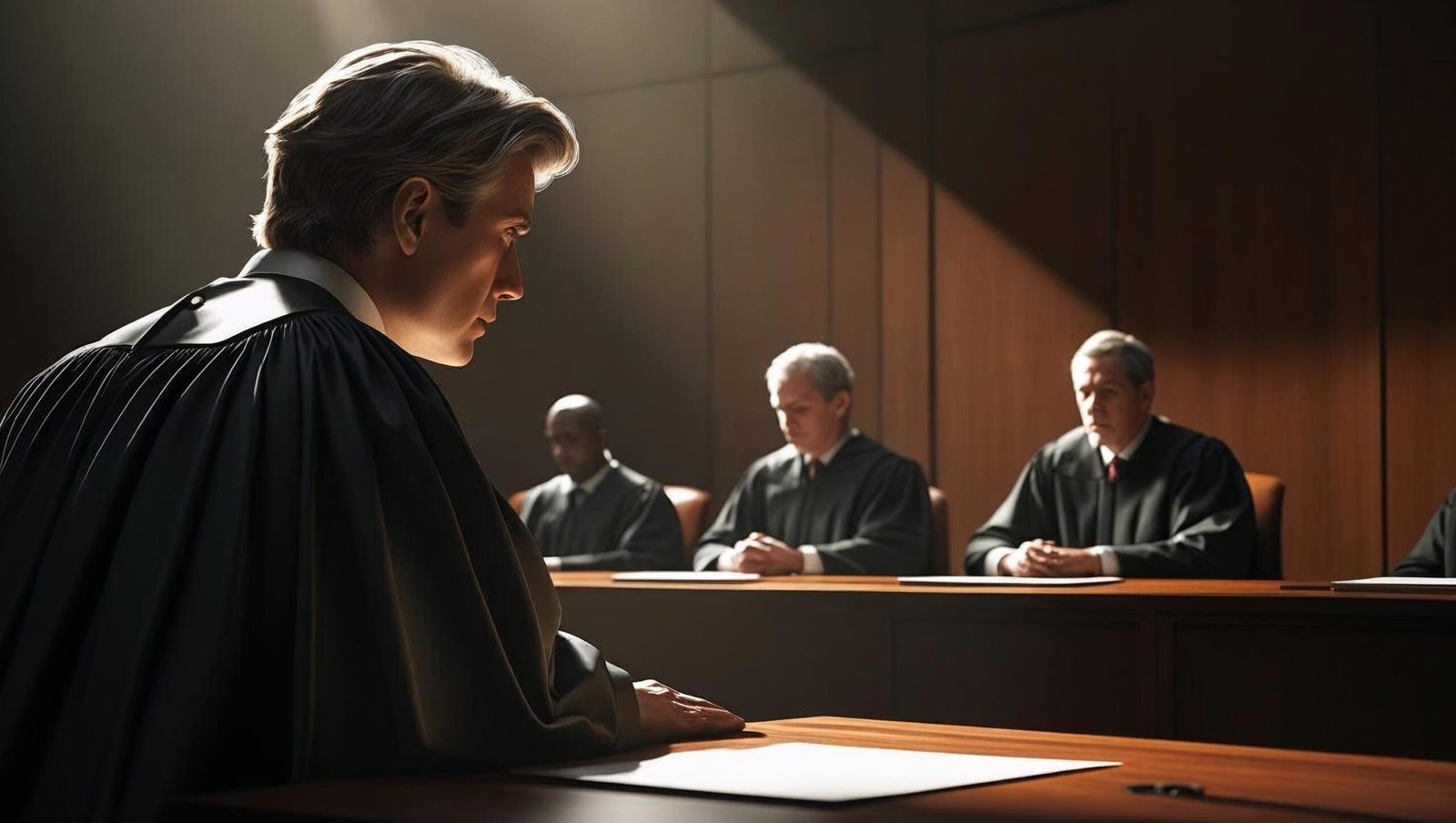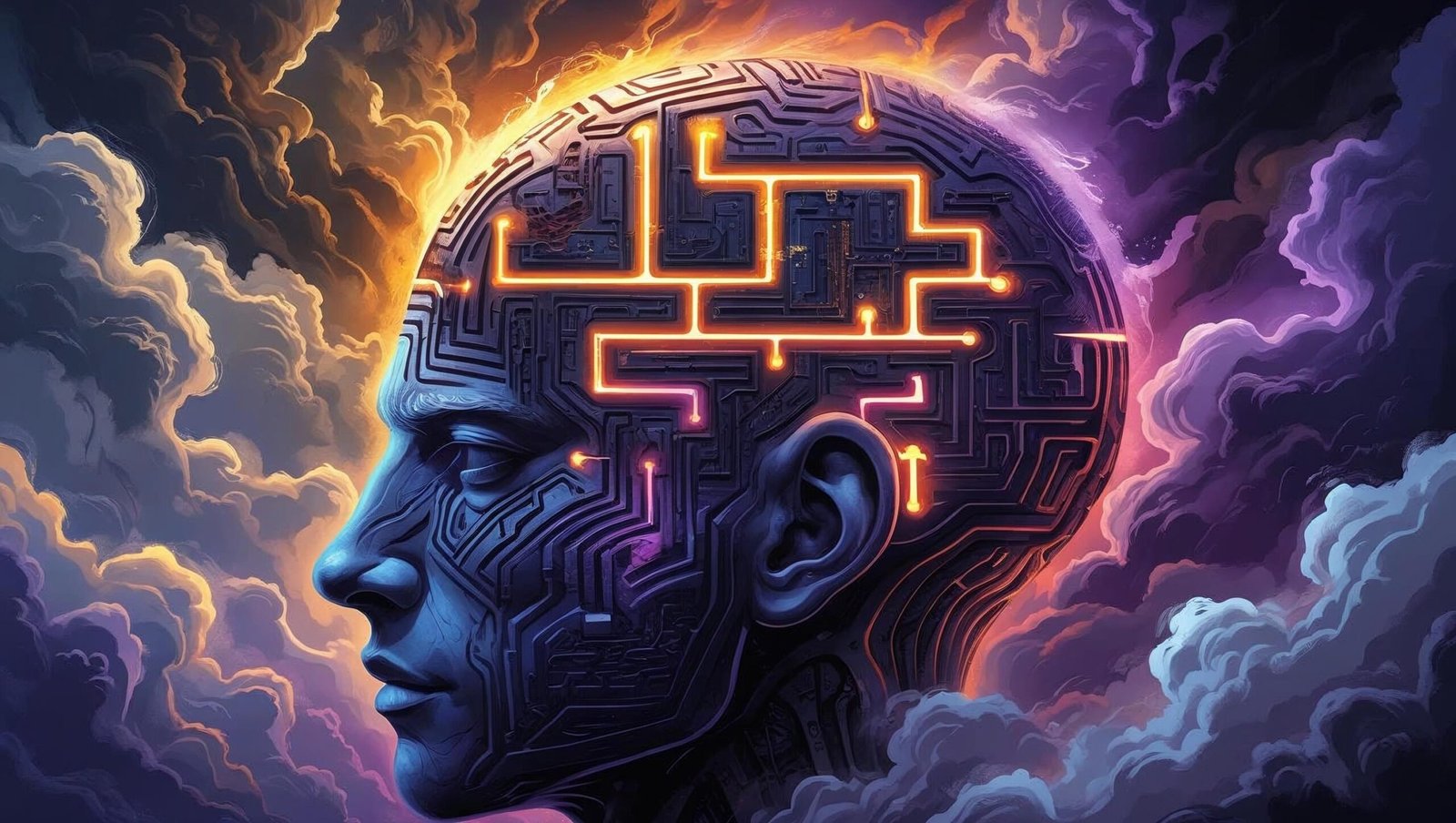Introduction
Blink by Malcolm Gladwell is a thought-provoking exploration of the subconscious mind’s ability to make decisions in an instant. In a world dominated by long deliberation and analytical processing, Blink by Malcolm Gladwell presents a radical idea—that sometimes, thinking less is thinking better.
Malcolm Gladwell is known for distilling complex psychological phenomena into engaging stories. In Blink by Malcolm Gladwell, he introduces us to the science of thin-slicing—the capacity to judge a situation based on limited data. This book not only praises intuitive judgment but also warns us of its vulnerabilities.
In this review of Blink by Malcolm Gladwell, we shall walk through the book’s structure, core insights, examples, strengths, limitations, and its application to our daily lives.

1. What is Thin-Slicing? The Central Premise of Blink by Malcolm Gladwell
The central idea in Blink by Malcolm Gladwell is thin-slicing—the ability of our unconscious to find patterns and draw conclusions from minimal data. Gladwell posits that in many situations, snap decisions are as effective—or even more effective—than those made after exhaustive reasoning.
For example, Blink by Malcolm Gladwell begins with the story of a kouros statue bought by the Getty Museum. Despite extensive scientific analysis proving its authenticity, several experts instantly felt something was wrong. Their instinct was correct—the statue was a fake. This story highlights the intuitive intelligence celebrated in Blink by Malcolm Gladwell.
2. Power of Snap Judgments: When Two Seconds Are Enough
According to Blink by Malcolm Gladwell, the subconscious mind processes cues at a lightning-fast pace, enabling experts to make spot-on judgments within seconds. Gladwell provides the example of psychologist John Gottman, who could predict with remarkable accuracy whether a couple would divorce, after just a few minutes of observing their conversation.
This reinforces a major idea in Blink by Malcolm Gladwell—not all good decisions require prolonged thought. Sometimes, the first impression is the most accurate.
3. The Dangers of Snap Judgments in Blink by Malcolm Gladwell
While Blink by Malcolm Gladwell celebrates the power of intuition, it also emphasizes its flaws. Snap judgments can be distorted by personal biases and societal stereotypes.
One of the most powerful examples in Blink by Malcolm Gladwell is the tragic case of Amadou Diallo. The young African man was mistakenly identified as a threat and shot by police officers. This horrific event illustrates how thin-slicing, when combined with fear and prejudice, can lead to fatal consequences.
Gladwell urges readers of Blink by Malcolm Gladwell to understand and manage their unconscious biases rather than blindly trust every instinctive reaction.
4. The Warren Harding Error: A Cautionary Tale in Blink by Malcolm Gladwell
In a chapter titled “The Warren Harding Error,” Blink by Malcolm Gladwell discusses how superficial judgments can mislead us. Warren Harding, who looked “presidential,” was elevated to power despite being an incompetent leader. His success stemmed largely from his appearance.
Gladwell uses this to highlight a phenomenon where our minds favor aesthetics over substance. Through this example, Blink by Malcolm Gladwell warns that the instinctive mind is not always wise—it can be gullible and prejudiced.
5. When and Where Thin-Slicing Works Best
Not every snap decision is harmful. In many real-world scenarios, as Blink by Malcolm Gladwell asserts, thin-slicing leads to superior results. Professionals like firefighters, doctors, and athletes often rely on intuition built from years of experience.
Blink by Malcolm Gladwell clarifies that expert intuition is not magic. It is the result of repeated exposure, training, and feedback. For thin-slicing to be effective, it must be honed over time and subject to conscious correction when biases emerge.
6. The Locked Door: The Unconscious Mind and Its Secrets
In Blink by Malcolm Gladwell, the concept of the “locked door” refers to our inability to fully access or explain the workings of our unconscious. Our minds can form accurate judgments, yet we often cannot articulate the reasoning behind them.
This insight in Blink by Malcolm Gladwell encourages a deeper respect for the mystery of the human mind. It also reminds us that reasoning does not always occur in words. Sometimes, we feel rather than know—and those feelings often contain hidden truths.

7. Applying the Lessons of Blink by Malcolm Gladwell to Life
Blink by Malcolm Gladwell offers transformative ideas applicable to real-life decisions—in hiring, marketing, medical diagnosis, and even romantic relationships.
By learning how to trust trained instincts while staying cautious of bias, we can refine our judgment. Gladwell’s work teaches that awareness, experience, and introspection can turn intuition into a formidable tool.
For readers seeking self-improvement, business success, or better interpersonal understanding, Blink by Malcolm Gladwell serves as both a guide and a caution.
The Psychology Behind Instant Judgments
The human mind is remarkably complex. Often, decisions arise not from extended contemplation but from instantaneous impressions. These judgments occur so rapidly that individuals may not even be aware a decision has been made. Cognitive psychologists have long studied these phenomena, examining how unconscious processes guide much of our behavior.
Instant judgments originate from deep-seated mental associations, shaped by past experiences, cultural conditioning, and even biological instincts. This is why people often “feel” something is right or wrong before they can explain why. These rapid responses can be incredibly accurate, especially when refined through experience, but they also carry risks—such as reinforcing stereotypes or bypassing critical reasoning.
Why Intuition Isn’t Always the Villain
Intuition often gets a bad reputation. It’s viewed as unreliable, especially in scientific or business settings where logic and data are prized. However, numerous real-world situations prove the value of gut reactions. Professionals in high-pressure environments—like emergency medical responders or seasoned athletes—frequently rely on instinct developed through years of exposure to relevant stimuli.
This instinctive ability is often described as a form of “muscle memory” for the brain. It’s a culmination of repeated patterns, subtle cues, and feedback loops that embed knowledge at a subconscious level. In high-stakes scenarios, instinct can outperform analytical reasoning because there’s no time for deep thought. However, such power must be wielded carefully and honed deliberately.
The Role of Environment in Shaping Perception
Environmental context greatly influences how people perceive and react to information. An individual might interpret the same facial expression differently depending on the setting. For example, raised eyebrows during a job interview could be interpreted as skepticism, while in a comedy show, the same expression might suggest surprise or amusement.
Context helps people “frame” their experiences. These frames guide snap judgments and determine the emotional tone with which information is received. Being aware of this can help one understand how easily perception can be swayed by subtle environmental cues.
Training the Mind for Better First Impressions
While fast judgments are unavoidable, they are not untrainable. Cognitive science supports the idea that people can improve their instinctive responses through mindfulness, critical reflection, and exposure to diverse scenarios. By consciously analyzing past mistakes in judgment, individuals can recalibrate their mental heuristics.
One powerful technique is deliberate practice. This involves repeating a task with focused attention and receiving immediate feedback. Over time, the brain refines its recognition patterns, resulting in sharper and more accurate assessments.
The Science of Cognitive Bias
Cognitive biases are systematic errors in thinking that affect the decisions and judgments that people make. These biases are often invisible to the individual, yet they significantly influence behavior. Among the most well-known are confirmation bias, availability heuristic, and anchoring bias.
These shortcuts are not inherently flawed—they exist because they save mental energy. But when these biases go unchecked, they can lead to flawed reasoning. Understanding how and why they occur is a crucial step toward minimizing their negative impact.

How Emotion Affects Rapid Decisions
Emotion plays a powerful role in immediate responses. Contrary to the notion that emotions cloud judgment, many researchers argue that they are essential for making sound decisions. Emotions signal the brain about potential risks and rewards, often before the conscious mind can process what’s happening.
However, emotions can be both allies and adversaries. Fear, for example, may cause one to flee from a harmless situation, while excitement might lead to risky choices. The key lies in emotional intelligence—being aware of one’s feelings and understanding how they influence thought processes.
Case Examples from Business and Leadership
Executives often face situations that require split-second decisions. Successful leaders tend to develop a sense of what will work and what won’t, based on years of experience, rather than detailed data analysis. In hiring, for instance, a brief conversation can sometimes tell a manager more than an hour-long interview.
But businesses have also suffered from poor snap judgments. Consider the product launches that failed because of overconfidence, or mergers that collapsed due to ignored red flags. The business world illustrates both the strengths and weaknesses of intuitive thinking, reminding professionals to balance instinct with evidence.
Why We Misjudge People So Quickly
Humans are wired to make quick evaluations of others. This evolutionary trait was vital for survival—quickly distinguishing between friend and foe could mean life or death. In today’s world, though, this same mechanism can lead to social pitfalls, such as stereotyping or misreading intentions.
Factors like clothing, body language, tone of voice, and even physical attractiveness play a disproportionate role in how individuals form impressions. Becoming aware of these tendencies is the first step toward fostering more empathetic and fair interactions.
Art, Music, and Intuitive Understanding
Artistic experiences offer rich ground for exploring intuitive reactions. When viewing a painting or listening to music, people often respond emotionally before they can explain their reaction. This immediate connection is evidence of the brain’s ability to make meaning without language.
This phenomenon has practical applications in marketing, branding, and design, where visual and auditory cues aim to provoke specific emotional responses. Understanding how people instinctively react to creative works can enhance communication and influence.
Rapid Decision-Making in Emergency Situations
One of the most dramatic illustrations of unconscious decision-making is in life-or-death emergencies. Firefighters, soldiers, and pilots often have mere seconds to act. In these cases, conscious analysis would take too long. Instead, their actions are guided by deeply internalized protocols and trained intuition.
Such situations underscore the importance of preparation. Individuals who train rigorously in simulated environments develop the mental models necessary to respond effectively under pressure. Their fast decisions are not guesses—they are informed reactions forged through experience.

A symbolic chess match between calculated reasoning and gut feeling
The Legal and Ethical Implications of Snap Judgments
Fast thinking extends into the realm of law enforcement, justice, and ethics. When authorities act on flawed intuition, the consequences can be severe—resulting in wrongful arrests, excessive force, or biased rulings.
Recognizing the presence of unconscious biases in these environments is crucial. Many organizations now incorporate training programs designed to help personnel identify and mitigate their instinctive reactions. The goal is not to eliminate fast decisions, but to ensure they are informed, fair, and accountable.
How Media Influences Perception and Instinct
Mass media plays a pivotal role in shaping public perceptions and unconscious attitudes. Repeated exposure to specific narratives, images, and stereotypes can influence how people judge situations and individuals—even when they believe they are being objective.
News outlets, advertisements, and social media content all contribute to this shaping process. Developing media literacy—critically analyzing the content one consumes—can help counteract misleading influences.
Educational Systems and the Cultivation of Critical Thinking
Education systems often emphasize rational thinking and logical problem-solving. While these skills are essential, there’s increasing recognition of the need to also nurture intuitive insight and emotional awareness.
Incorporating experiential learning, reflection, and interdisciplinary exploration allows students to engage both the analytical and intuitive faculties of the brain. This creates more balanced decision-makers who can adapt to complex, real-world situations.
A Subtle Shift in Everyday Awareness
Sometimes, the most profound changes in thinking begin with small shifts in perspective. Becoming aware of how quickly impressions form—and how often they go unquestioned—can open the door to more conscious choices. This subtle transformation doesn’t require dramatic effort; it begins with noticing. Whether during conversations, while watching the news, or making daily decisions, a heightened awareness can lead to greater clarity and balance. Over time, these small adjustments can have a lasting impact on personal growth, emotional intelligence, and interpersonal understanding.
Final Thoughts Before the Conclusion
Judging something—or someone—at a glance can feel like magic. But behind this ability lies a combination of neural efficiency, life experience, and psychological pattern recognition. By acknowledging the power of first impressions while scrutinizing their origins, individuals can move toward a more mindful approach to decision-making.
Understanding the mechanisms of rapid cognition doesn’t just sharpen thinking—it deepens empathy, improves leadership, and promotes fairness. Whether in boardrooms, classrooms, or personal relationships, harnessing the subtle power of intuition is a skill worth cultivating.

Writing Style and Presentation in Blink by Malcolm Gladwell
Gladwell’s style in Blink by Malcolm Gladwell is accessible yet profound. Through storytelling, he draws readers into scientific discussions without overwhelming them.
He balances intellectual rigor with anecdotal charm. This makes Blink by Malcolm Gladwell not only informative but also enjoyable to read.
Criticisms and Limitations of Blink by Malcolm Gladwell
While Blink by Malcolm Gladwell has been praised globally, some scholars have questioned its overreliance on storytelling. Critics argue that some conclusions are oversimplified and not universally applicable.
However, even skeptics agree that Blink by Malcolm Gladwell popularized an important debate about the subconscious mind. The book continues to inspire discussions across psychology, business, and education.
FAQs on Blink by Malcolm Gladwell
Q1. What is the central idea in Blink by Malcolm Gladwell?
The main premise of Blink by Malcolm Gladwell is that the subconscious mind can make accurate decisions rapidly through thin-slicing.
Q2. Is Blink by Malcolm Gladwell based on real science?
Yes. The book draws on real psychological studies, although it conveys them through narratives rather than technical language.
Q3. Who will benefit from reading Blink by Malcolm Gladwell?
Anyone interested in psychology, business, education, or personal development will find Blink by Malcolm Gladwell highly valuable.
Q4. Is Blink by Malcolm Gladwell easy to understand?
Absolutely. Gladwell writes in a clear, engaging style, making complex ideas accessible to all readers.
Q5. What’s one major lesson from Blink by Malcolm Gladwell?
That intuition, when trained and informed, can be as powerful as—or more powerful than—deliberate analysis.
Conclusion
Blink by Malcolm Gladwell is not just a book; it is an invitation to rethink the way we make decisions. In a society that celebrates overthinking, Gladwell reminds us that the unconscious mind holds great wisdom—if we know how to listen.
From life-or-death decisions to everyday choices, Blink by Malcolm Gladwell shows us that quick judgments, when shaped by experience and awareness, can be astonishingly accurate. But it also reminds us to tread carefully—because intuition, unchecked, can mislead.
In sum, Blink by Malcolm Gladwell challenges our assumptions, sharpens our insight, and transforms the way we engage with our own minds.
Visit: shubhanshuinsights.com
For more insightful book reviews, life strategies, and personal development guides.
Embrace awareness, refine your instincts, and trust your journey—because every moment offers a chance to choose understanding over reaction.